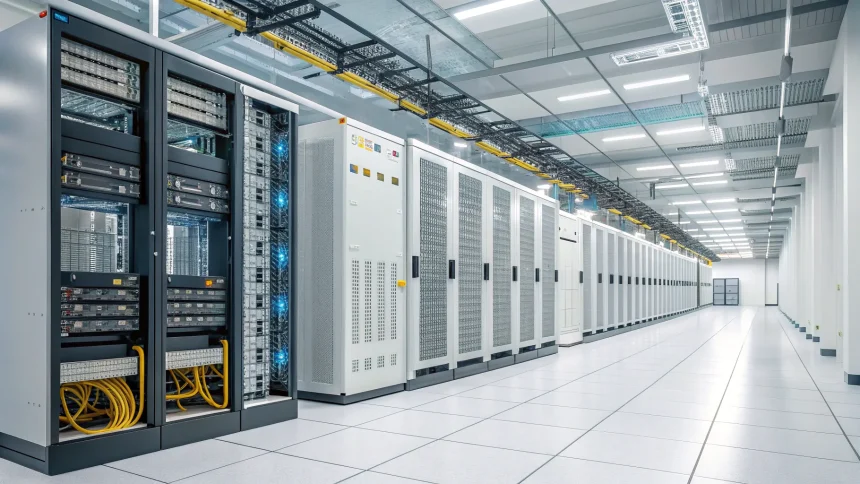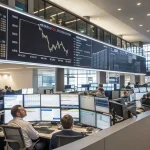Credo Technology Group is drawing fresh attention as demand for AI infrastructure accelerates and investors hunt for reliable network suppliers. The company sits inside the data center buildout that is reshaping computing. A recent market note called out its top-tier status. Timing matters because cloud giants are racing to expand capacity, while suppliers with proven products and scale gain share.
“Credo Technology Group is part of the vast, growing AI supersystem and has a best-possible 99 Composite Rating.”
The statement puts Credo on a list of vendors tied to AI that could benefit from heavy spending on servers, high-speed links, and power systems. It also signals strong technical and stock performance, as “Composite Rating” is often used by market watchers to blend growth, earnings, and price action into a single score.
Why Connectivity Matters for AI
AI training and inference depend on fast, low-latency connections between chips and racks. As models scale, the number of links grows sharply. That makes networking a choke point and a cost driver.
Credo focuses on high-speed connectivity parts, including electrical interconnects and optical technologies used inside large data centers. These products help move data between GPUs, CPUs, and storage with less power and fewer errors. Reliability is key because downtime can halt training jobs worth millions of dollars.
Industry analysts say demand for 800G and 1.6T interconnects is rising as hyperscalers refresh networks. They also point to power savings as a priority. Lower power per bit allows operators to fit more compute in the same footprint.
What the Rating Signals
A best-possible Composite Rating suggests strong fundamentals and momentum. While methodologies vary, these scores often factor revenue growth, earnings trajectory, and price strength. For suppliers tied to AI, it can indicate that demand is translating into measurable results.
Investors often look for three traits in AI supply names. First, clear product-market fit with major customers. Second, visibility into next-generation standards. Third, evidence of execution through revenue and margin trends.
- Product demand: Tied to GPU buildouts and data center upgrades.
- Standards: Shift to 800G and early work on 1.6T.
- Execution: Ability to scale production and meet lead times.
The cited rating implies that Credo is delivering on some or all of these points. It also puts the company on screens used by institutional investors who track high-scoring stocks.
Industry Context and Competitors
Networking for AI is a concentrated field with heavyweight rivals. Broadcom and Marvell supply key silicon for switches and PHYs. Cable and optics vendors compete on cost, power, and reach. Large cloud buyers often split orders among multiple suppliers to reduce risk.
AI has lifted the entire supply chain, from GPU makers to cooling firms. But dependency cuts both ways. If a large customer delays a project, suppliers can face order pushouts. If a new standard slips, inventory can pile up.
Analysts note that tight coordination is needed to align switch chips, optical modules, and cabling. Vendors that ship qualified parts early often win sockets for several product cycles.
Risks and Pressures
Despite the growth story, specialist suppliers face swings in demand and pricing pressure. Key risks include:
- Customer concentration: A few buyers control large volumes.
- Standard transitions: Shifts from 400G to 800G and to 1.6T can disrupt mix and margins.
- Supply constraints: Tight packaging and substrate capacity can slow deliveries.
- Competition: Bigger rivals can bundle parts and push pricing.
These factors can make quarterly results uneven, even in a strong end market. Clear guidance and inventory management help smooth the ride.
What Comes Next for AI Networking
Most forecasts point to steady growth in AI-capable data centers over the next few years. The shift to larger models and real-time inference will need faster east-west traffic inside facilities. That should support demand for next-gen connectivity.
For suppliers like Credo, the focus now is on power-efficient designs, strong signal integrity at higher speeds, and proven manufacturing partners. Design wins today can lock in revenue for multiple refresh cycles. The companies that balance speed, power, and cost will stand out.
The message is clear: AI growth is pulling network demand forward, and Credo appears well placed in that cycle. A top Composite Rating signals momentum at a time when buyers are scaling out new clusters. Investors will watch for sustained revenue growth, progress on 800G and 1.6T products, and deeper ties with hyperscalers. If those trends hold, the tailwind from AI infrastructure could continue. If not, competitive and cycle risks may surface quickly.







